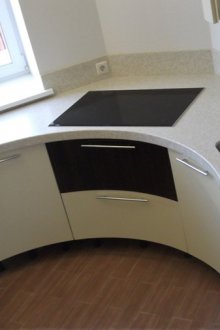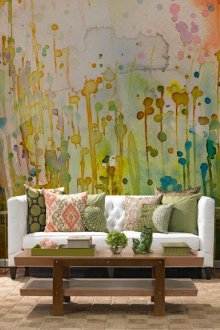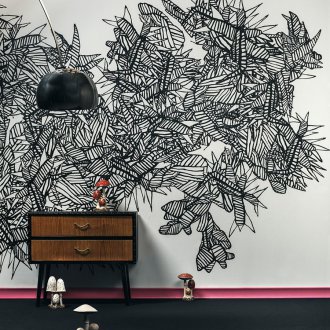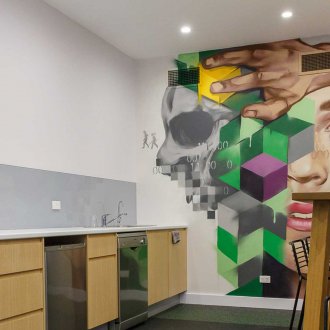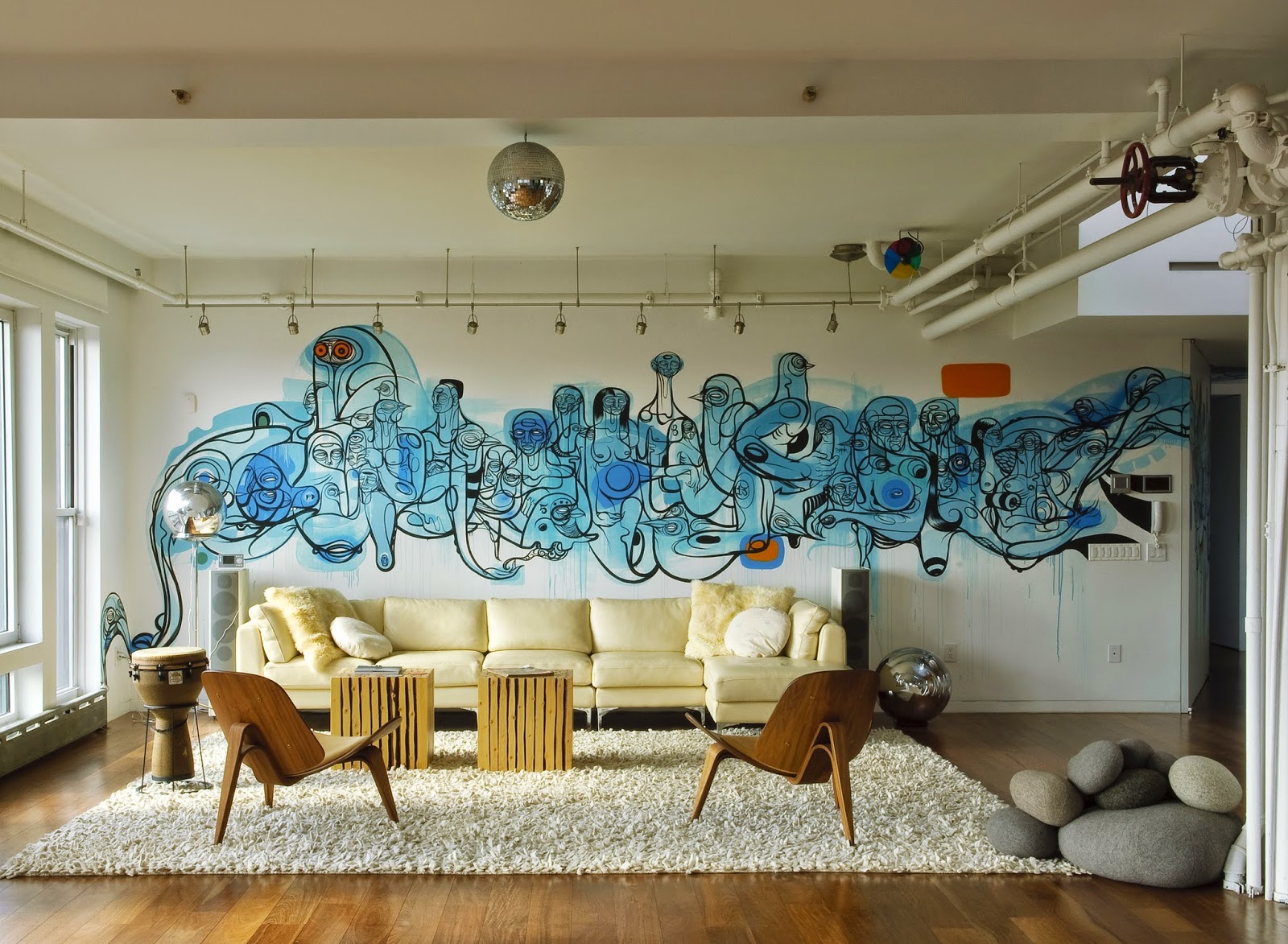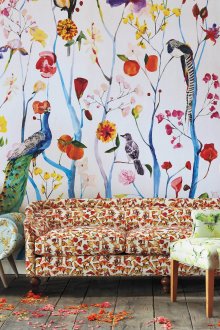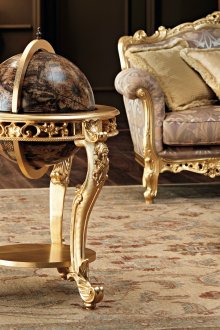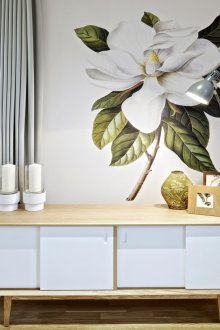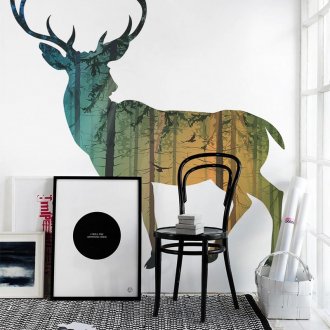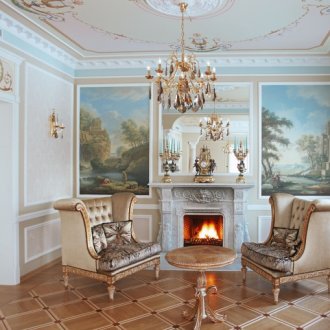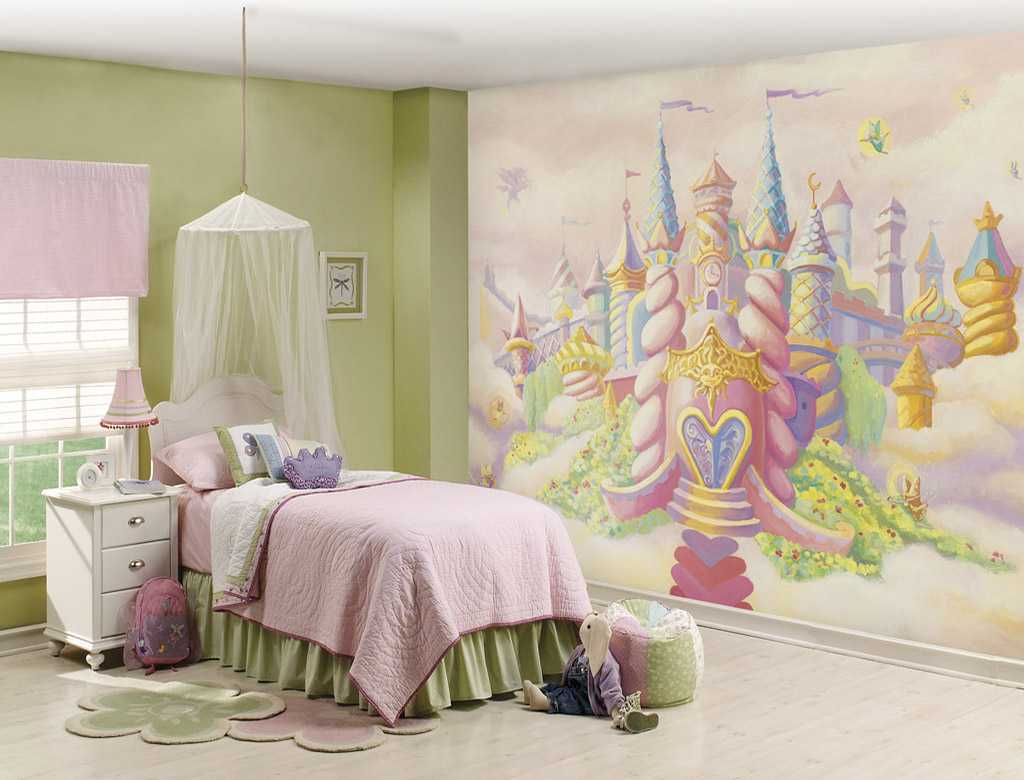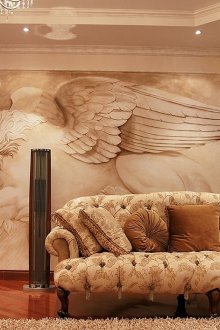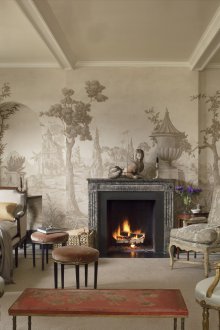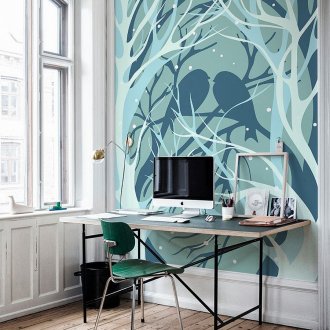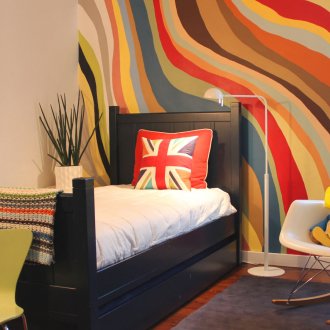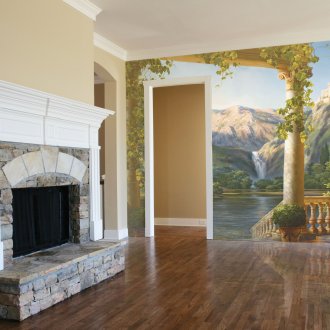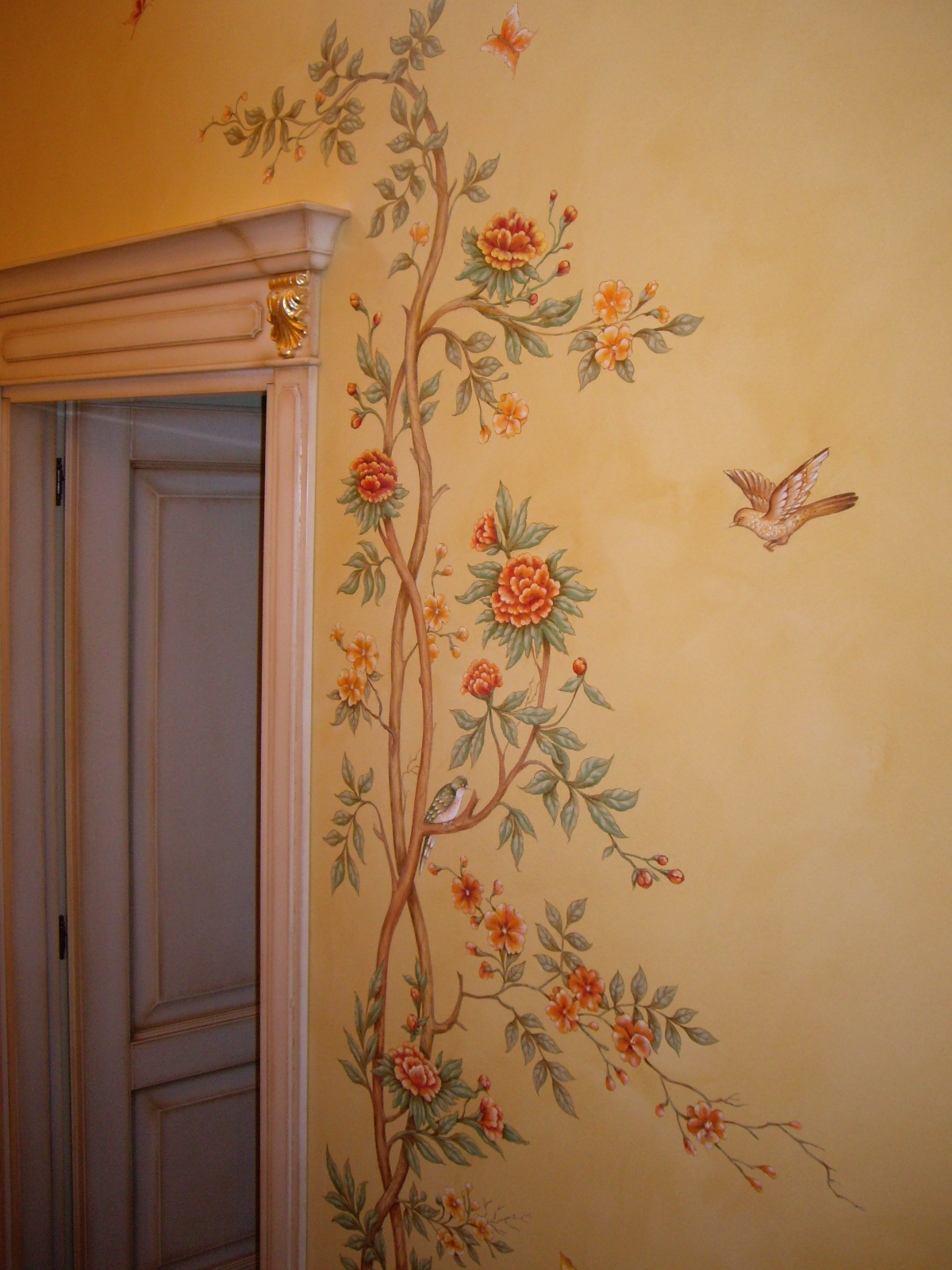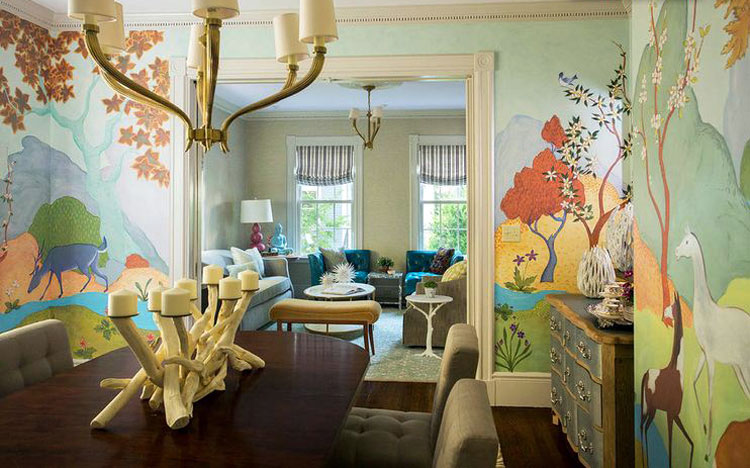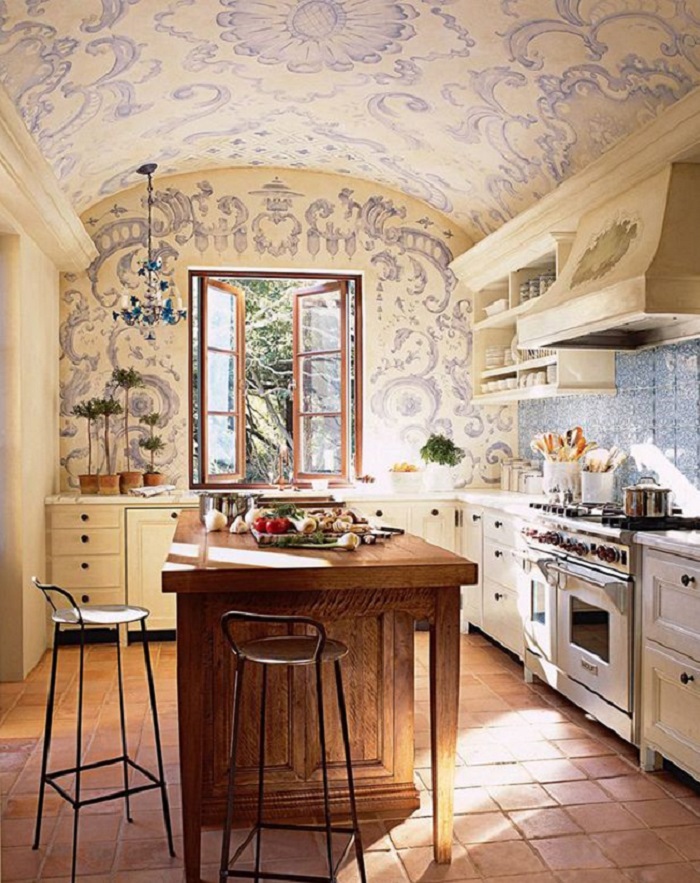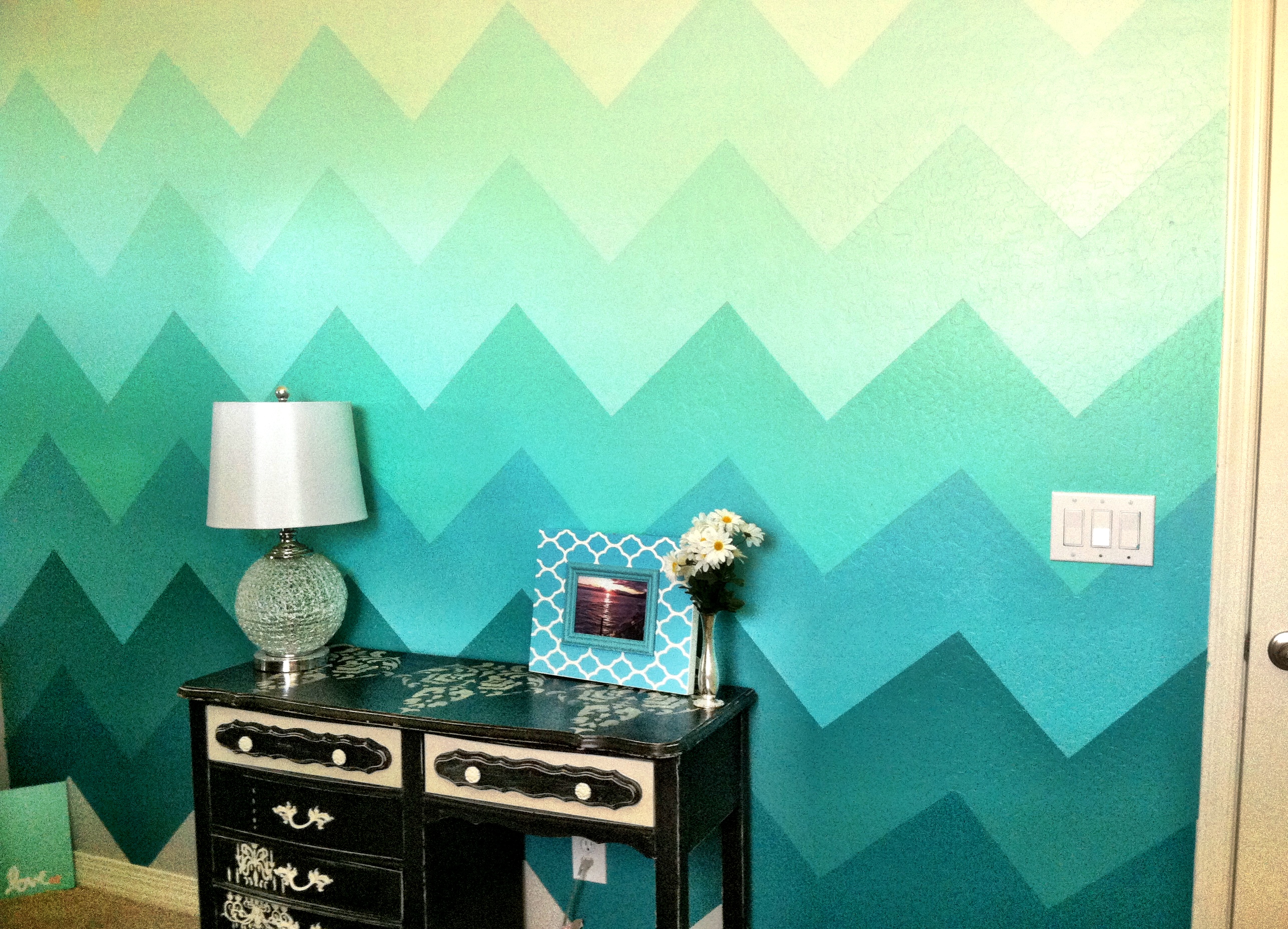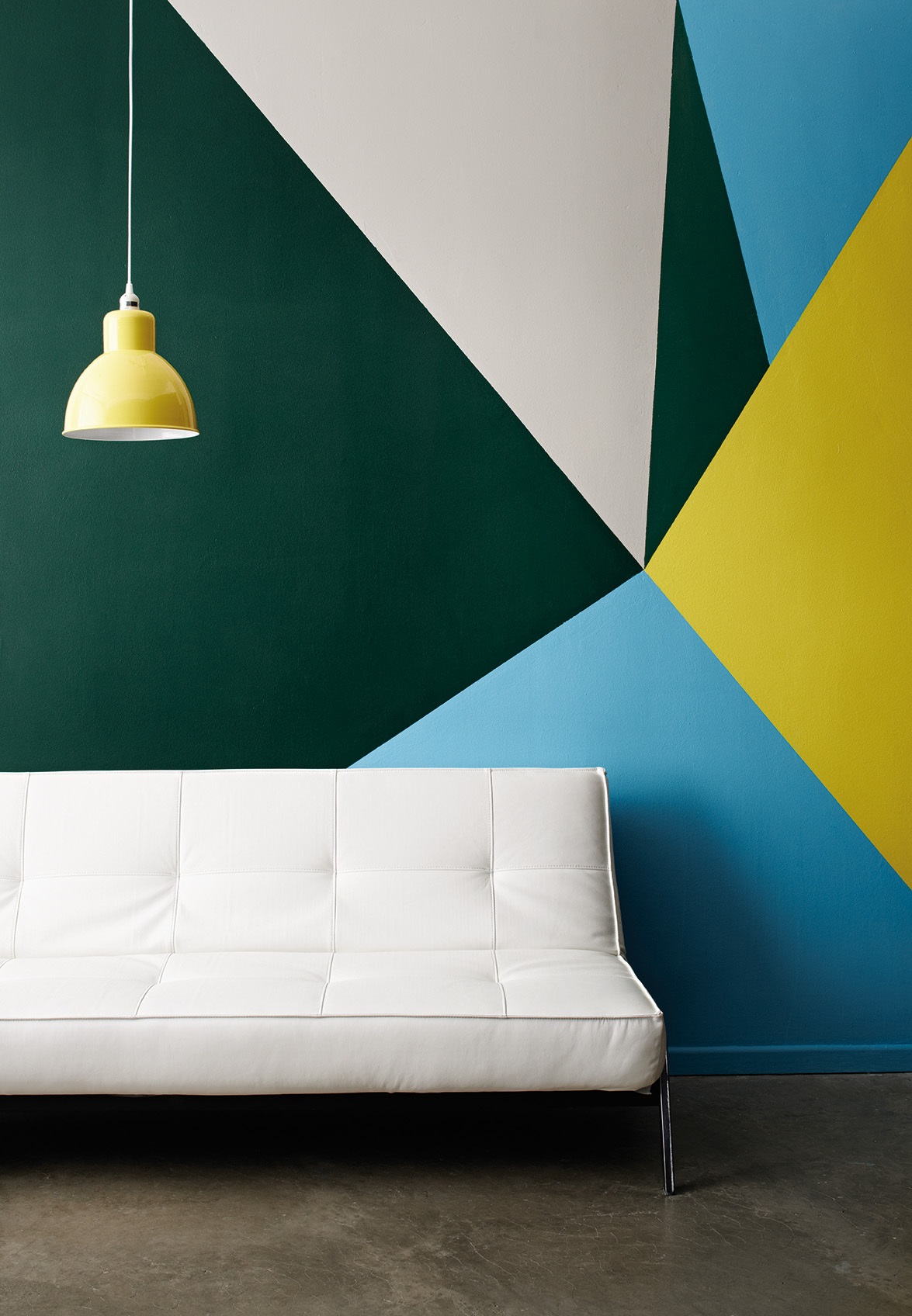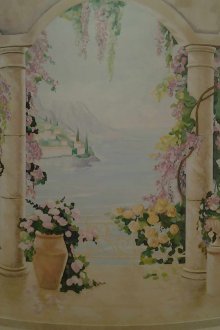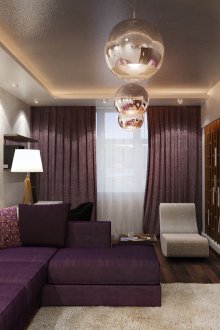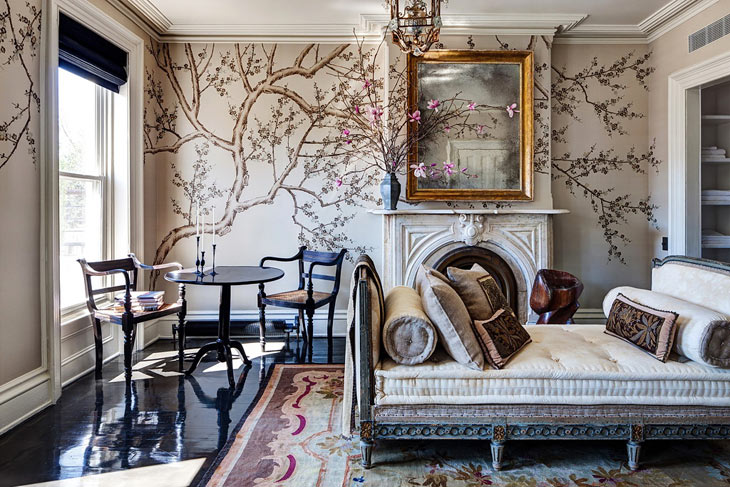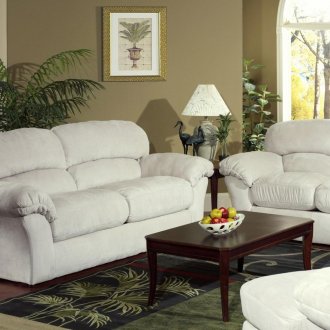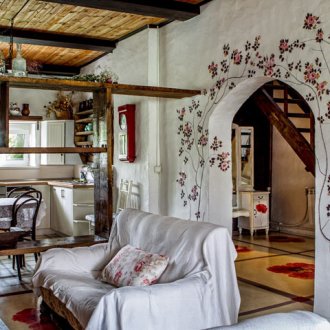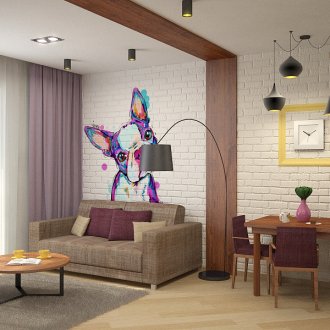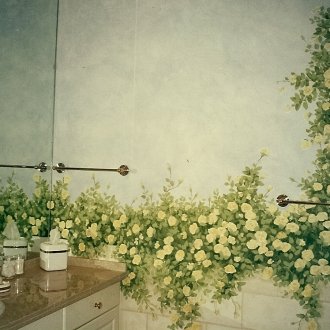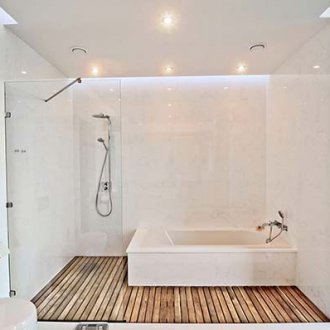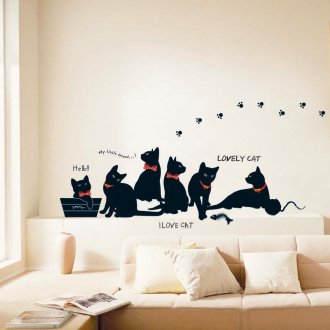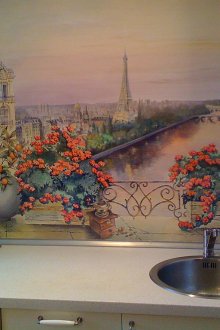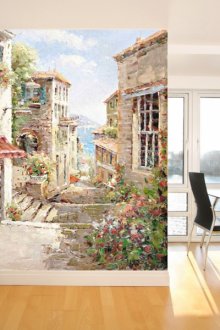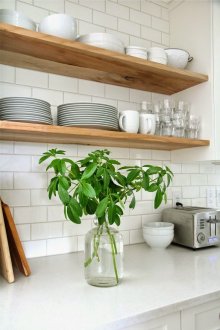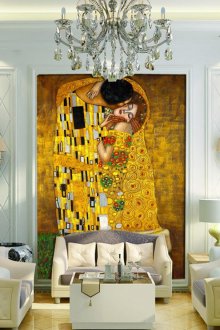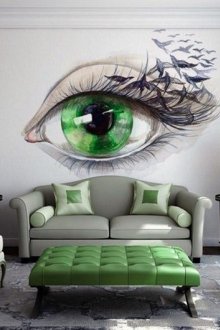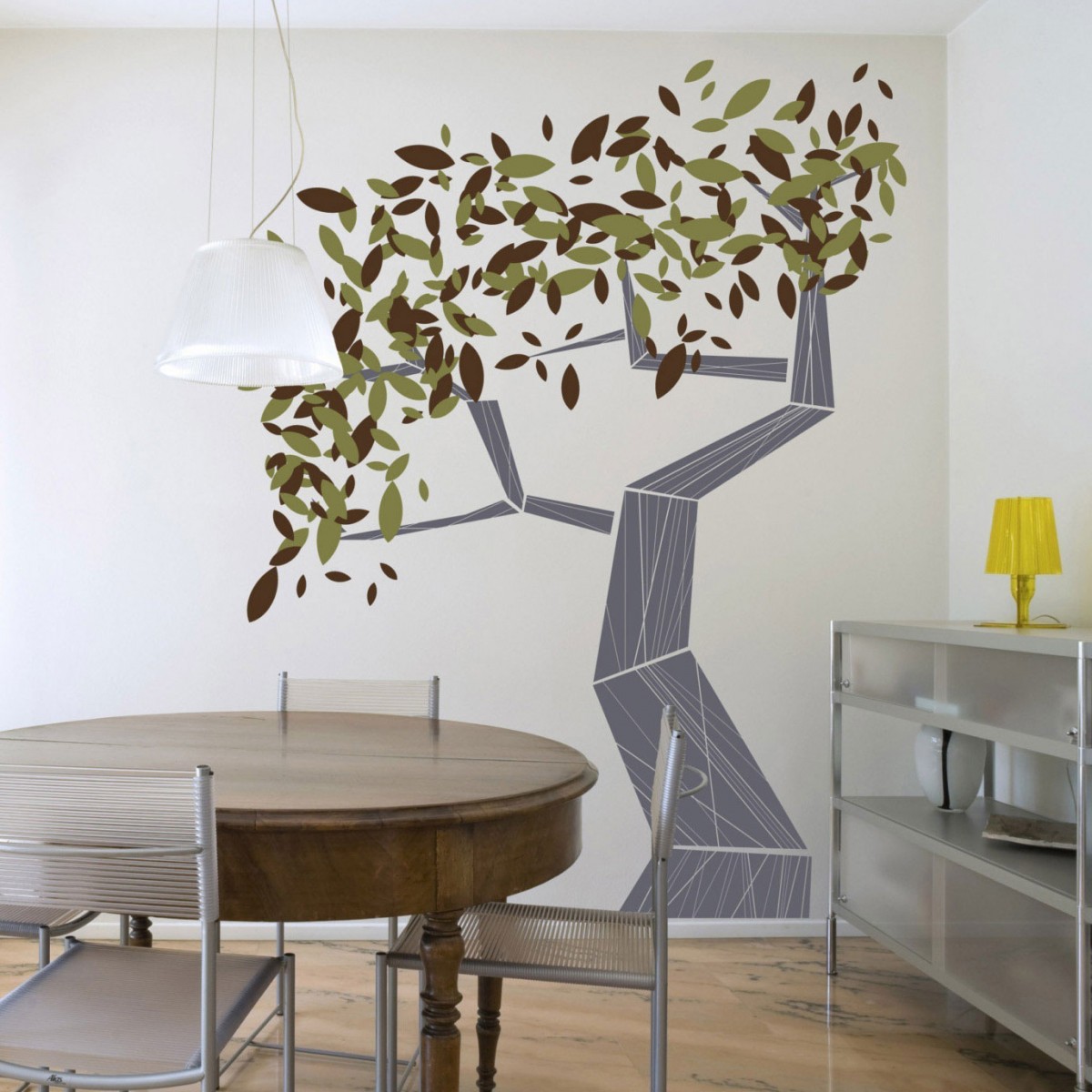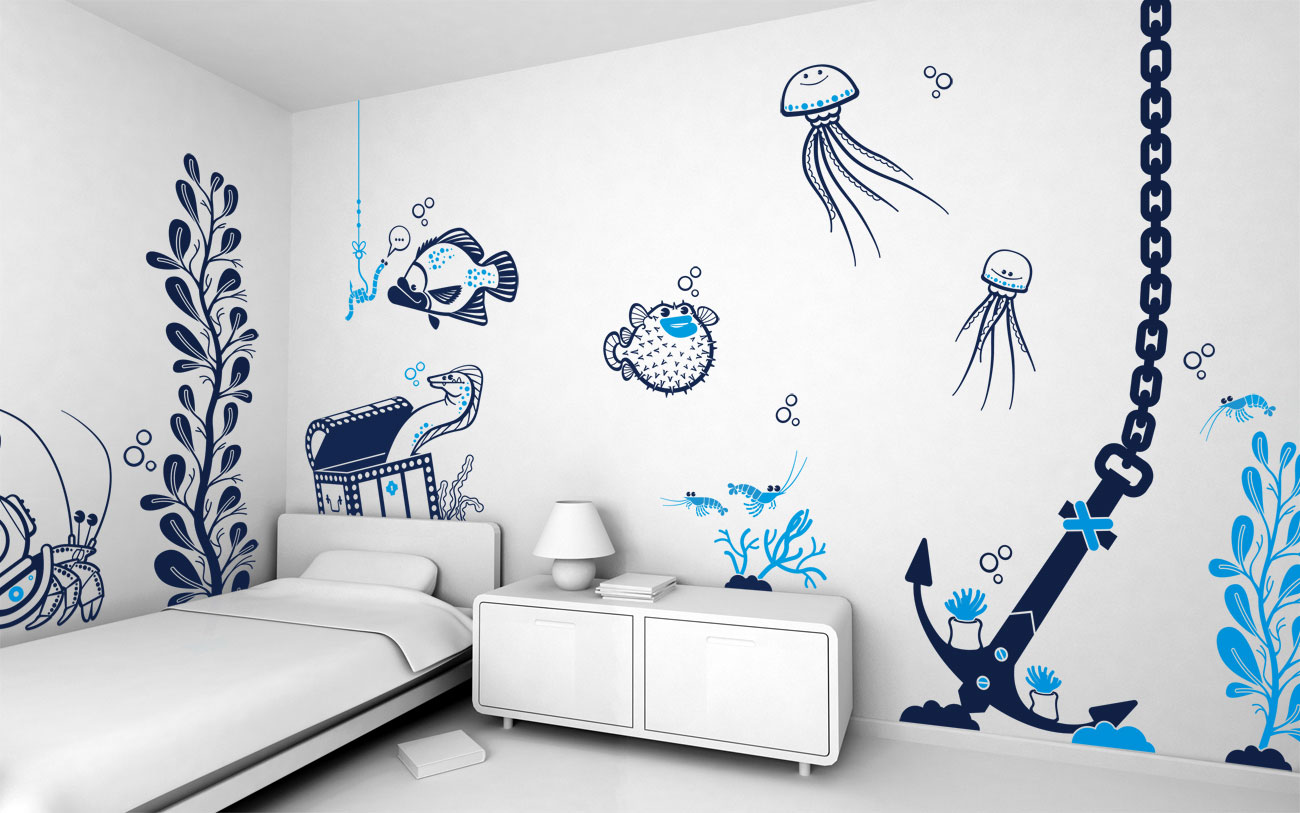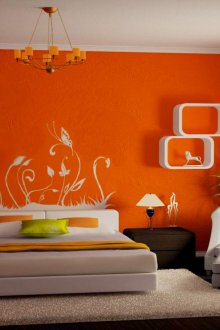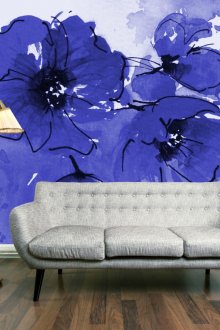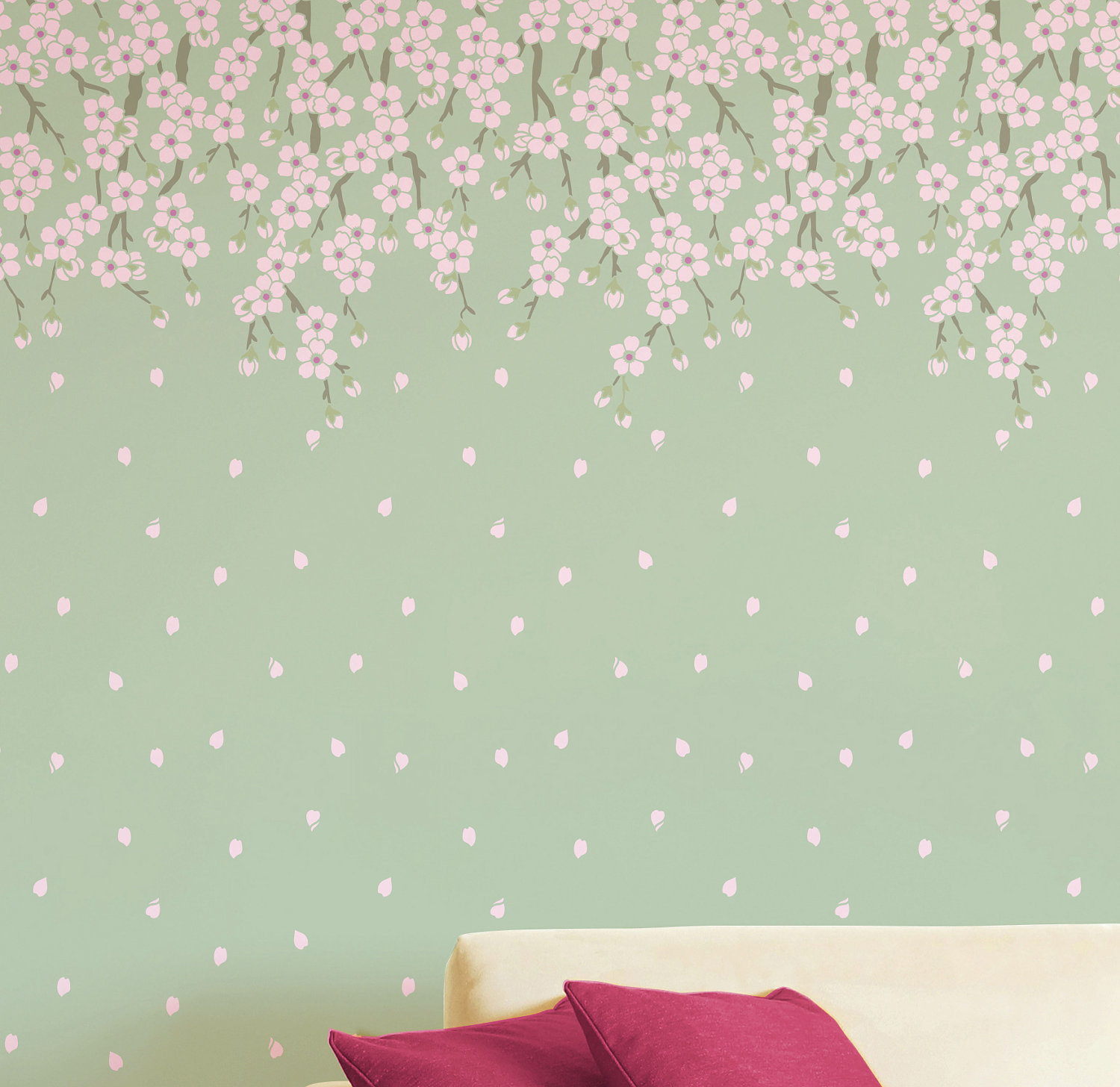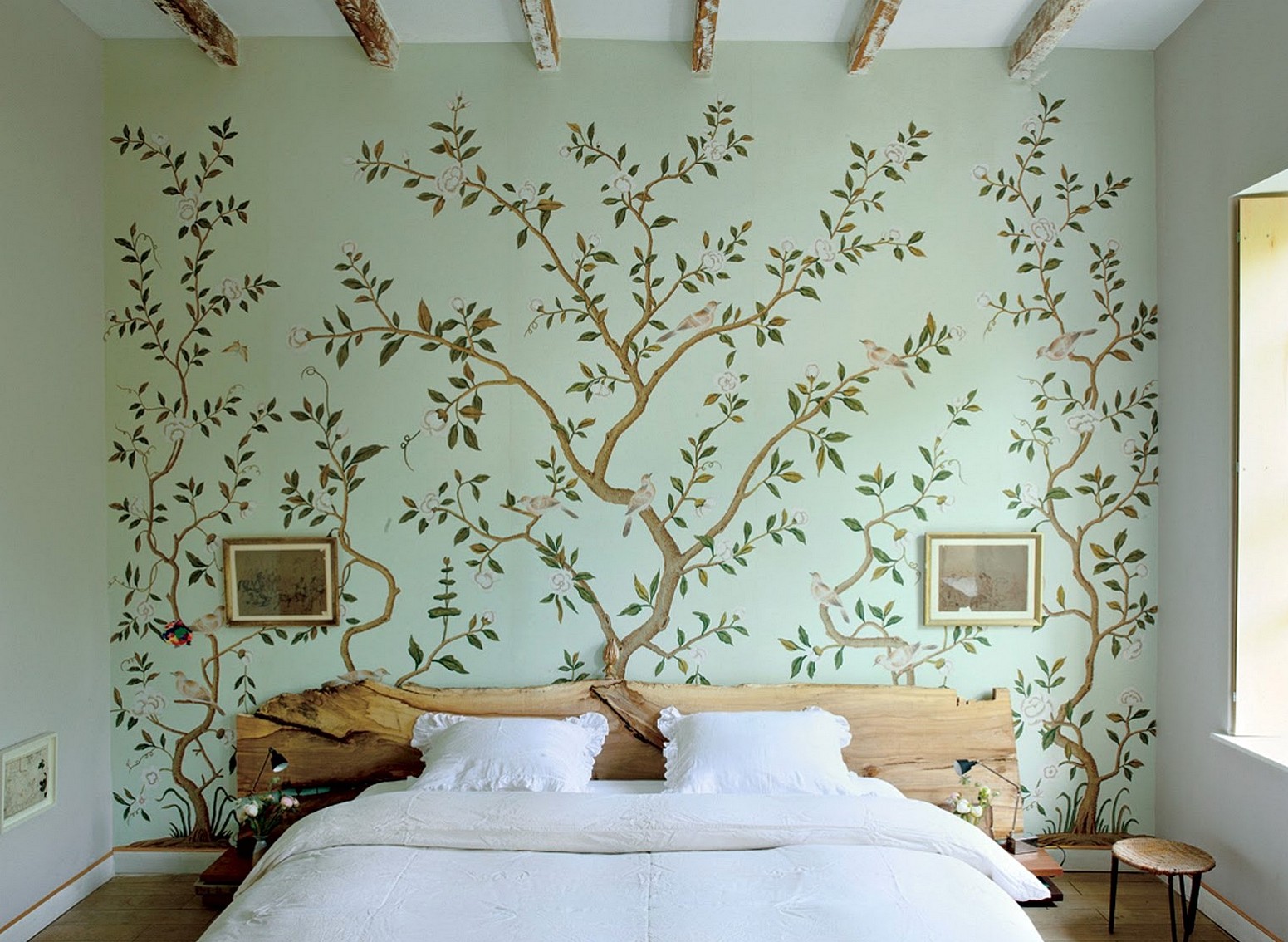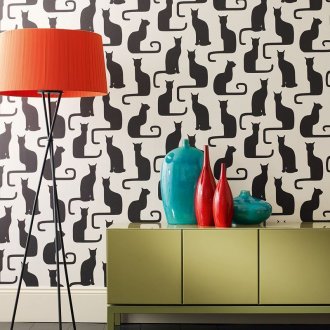Wall painting in the home interior: picturesque opportunities (56 photos)
Content
To give the room extravagance and exclusivity will help the wall painting in the apartment, which anyone can do. The main thing is to familiarize yourself with the rules and techniques for sketching, as well as pre-think ideas for painting walls.
The future picture will revive the interior of the house for a long time, so it is important not to make a mistake with the choice of sketch design. When painting walls, it is definitely worth considering the unity of the picture with furniture and lighting to set the general semantic orientation of the room.
Some ideas for painting
To revitalize the walls of the hall or lounges in the apartment, wall paintings in the themes of the sea landscape or a view of the secluded street of the city you would like to visit will be an ideal option. Painting the walls in the living room with such landscapes will help to calm down after a hard working day and will not hurt your eyes.
If the living room is decorated in a modern style, the so-called high-tech, a good option is the image of the fantastic technology of the future, which will contribute to the development of fantasy.
Hand-painted walls give a huge scope for imagination, which can be used in a children's room.
It is here that the important infant and teenage years of the child pass. Based on the sex and age of the baby, as well as guided by his tastes and wishes, you can create a new illusory world right in the room.
Bright colors and magic in the interior will not let your child get bored and will indirectly help in the development of the child. Wall painting in a children's room will allow you to accurately divide the space into three thematic zones:
- game room;
- sleeping;
- training.
Using the design of a children's room in this way, you can achieve concentration in a specific area with a focus on recreation, games or activities.
Children are very fond of ceilings decorated with starry skies, space planets or good fairies. Next to the play area, a great solution would be painting walls and ceilings with your favorite kid heroes from cartoons or fairy tales.
The bedroom in the house is considered a room of solitude and peace, so it is not worth using sharp and bright colors.
The wall painting in the bedroom should set you up for sleep, peace and long-awaited relaxation. Ideal colors for the bedroom will be light shades of beige, blue or green. Stencils for painting walls will help to make fairly light and not voluminous pictures, the main thing is not to use dark colors.
Wall painting options in non-residential premises of the apartment: kitchen, corridor and bathroom
The classic option for decorating the kitchen space will be the image of a still life. Decorating the kitchen in the form of a still life should stimulate the appetite, the main thing is not to place the ornament near the stove, as strong heat can spoil the paints, even if they are protected by varnish. Also, painting the walls with your own hands in the kitchen can be limited not only to still lifes, but also to sunny landscapes, sea nature, flowers and a magnificent forest.
The corridor is the first room in the apartment where guests enter and it is after it that the first impressions of the apartment are formed.Wall painting in the hallway should be based not only on your preferences, but also on the visual coincidence of space and interior with the picture. Painting the walls in the corridor using small details in the figure will help to increase a small space.
You can increase the height of the ceilings with the help of vertical ornaments in the image, and you can expand the width of the walls thanks to horizontal stripes.
Decorative wall painting in the interior of the bathroom requires the selection of moisture-resistant materials and protection of the finished picture from high humidity in the room. Ideal options for the image will be motifs that are associated with water. It can be water lilies, marine life, a waterfall or the seashore.
Wall painting in the bathroom involves the use of blue or blue shades of color. Since the room is small, you should not reduce it due to cumbersome painting and dark colors.
The most popular styles for wall painting
Decorative wall painting requires familiarization with the main directions of styles, which will help to present your future interior. By the beginning of the 2000s, wall painting styles identified four main fashion trends. Among these options, any person will find their own liking.
- Wall painting in baroque style. The ornaments of this style are saturated with plant motifs that curl and change shape to the maximum. Baroque painting is accompanied by the image on the walls and ceilings of large flowers, tree branches or large leaves. For a long time in the Baroque style, murals of half-naked bodies in wrestling or physical stress remain popular. The interior, which is made in the Baroque style, gives luxury to the room through a combination of bright and rich colors, as well as the play of light and shadow.
- Modern. Variants of wall painting in this style are easily recognized by the complicated system of ornament, in which large flowers with curved stems are used. Very often in the Art Nouveau style you can find a wall painted with fairytale characters. For example, elves or mermaids combined with the natural landscape.
- The classic version of the style. The most demanded and simple in execution, a style that does not require intricacy and wild imagination. It always remains relevant and includes simplicity and straightforwardness. The main elements in the wall painting of this style are the harmony of restraint and symmetry.
- Modern styles are to the liking of those people for whom the painting of walls in the interior with their own hands does not carry a special semantic and physical load. Modern painting includes three main areas - airbrushing, graffiti and screen painting. All these styles are easy to perform and without design skills. With the help of modern styles, it is easy to create fairly realistic images and 3D effects on the walls of the room.
Wall painting techniques
Currently, there are many techniques for painting on walls and ceilings for home painting. Materials and tools provide an almost unlimited opportunity to express their fantasies and ideas. The technique of wall painting should be selected based on what wall decoration will be the basis for the picture.
Plaster wall painting can be done on both smooth and textured surfaces. This is the most convenient option for beginner artists, since the wall is already initially smooth, clean and smooth.
Painting on a brick wall is complicated due to surface irregularities and roughnesses. It is most sensible to apply graffiti or airbrushing. In a room with a brick wall, it is most convenient for novice artists to use pre-prepared stencils and sketches.
Wall graphics are performed in various techniques.Volume painting of walls is very popular, which allows you to visually expand the room, increase the height of the ceiling or add illusory objects. The main objective of this technique is to visually strengthen the painted wall. Examples of volumetric painting are: a balcony with a sea view or an open window to a forest glade.
Embossed wall painting is difficult to perform, as the paint is applied in many layers and requires a lot of time to dry. Black-and-white wall painting in this technique looks perfect indoors. Also, for relief painting, the use of decorative textured plaster as a basis for applying a drawing is perfect.
Monochrome wall painting, which will be a win-win option, will ideally fit into the finished interior. For example, most of the wall can be decorated in the form of Italian frescoes or French Provence. The geometric wall painting, on the contrary, will not fit into every interior, already finished space. However, it is performed easily, and most conveniently using ready-made stencils. There are many ideas for geometry: stripes, cells, circles, zigzags, squares and similar ornament.
The choice of paint in creating the perfect picture
Paints for wall painting vary in structure and saturation. Oil, acrylic, fluorescent and tempera paints are distinguished. Wall painting with acrylic paints is the most convenient and easy to use. This paint is odorless, dries quickly and allows you to achieve the desired visual effect, thanks to the large color scheme.
When applying the drawing, you can mix not only techniques, but also paints for wall painting. By adding fluorescent colors, you can revive the picture in the dark. Such paints glow under the influence of ultraviolet lamps and allow you to realize a design plan.
Watercolor painting of walls can be used in combination with acrylic to highlight the semantic area of the picture. However, such paints must be varnished to strengthen the painting. Watercolors are applied to cleaned and evened plaster, as well as to matte white wallpapers that are suitable for painting.
